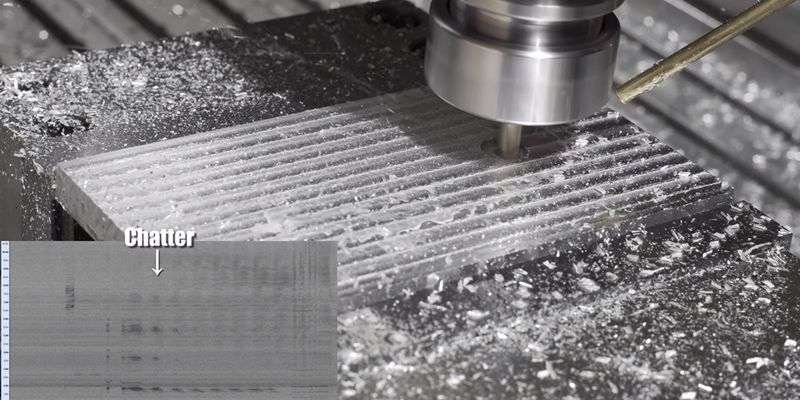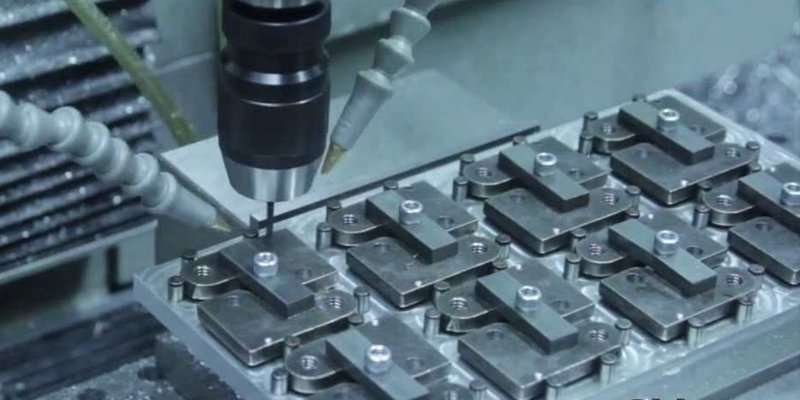Regarding high-precision manufacturing, CNC machining is one of the go-to processes, especially using different machines. They are highly efficient and versatile for vast materials, including metal, plastic polymers, and composites.
CNC machining copper is a typical process for manufacturing components using this metal. Besides steel and aluminum alloys, copper is a commonly used metal for manufacturing parts, especially for the electrical industry, because of its high conductivity.
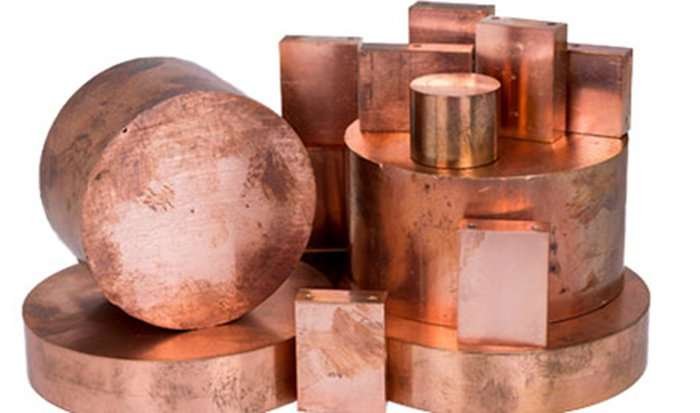
Table of Contents
ToggleProperties of Copper Material
The good mechanical and chemical properties of copper make it suitable for CNC machining operations and other manufacturing techniques. That said, let’s focus on this metal’s features that make it a good choice in machining.
High Conductivity
Copper is widely known for its excellent electrical conductivity. This feature significantly benefits the use of copper material in manufacturing electrical components like connectors. However, this feature also has its shortcomings when machining. The high conductivity may increase the wear and tear tendencies of cutting tools. Therefore, machinists must factor it in high thermal conductivity during machining.
High Thermal Conductivity
In addition to its electrical conductivity, copper also has a high thermal conductivity, which benefits the manufacturing of intricate components. Therefore, copper materials are suitable for manufacturing parts that require tight tolerance specifications. Also, this feature may benefit machining, as it reduces the chances of excessive heat buildup, warping, or heat deformation.
Corrosion Resistance
Compared to iron and other ferrous metals, copper is remarkably resistant to rust and corrosion. This excellent chemical property makes it ideal for applications with easy access to moisture and chemicals. However, manufacturers may need to engage in post-processing operations after general CNC machining to ensure the complete removal of contaminants that may reduce copper’s corrosion resistance.
Ductility and Malleability
Copper materials are ductile and highly malleable, making them an excellent fit for CNC machining and other metal fabrication. This feature allows them to retain the intricate details required, ensuring high-precision machining. Also, the high flexibility may make it prone to formation of burrs. Therefore, you may need an expert machinist when fabricating parts with copper material.

Grades of Copper for CNC Machining
There are different copper grades for machining and manufacturing purposes. Each, usually an alloy, has distinct features that separate them from others. Below are the standard alloys of copper used for CNC machining.
Copper C101
Copper C101 is also called Oxygen-Free electronic (OFE) copper. It is a high-conductivity copper alloy, containing at least 99.9 percent pure copper metal, with other elements, especially oxygen, in trace amounts.
This copper variant is relatively soft, making it easier to machine. It produces smooth cuts with less wear effects on the cutting tools. Because of its high conductivity, it significantly benefits the manufacture of electrical gadgets and high-precision parts. However, C101 copper is less corrosion-resistant and susceptible to burr formation.
Still, it’s one of the most used copper grades. In fact, because of its high copper content, it is often the base material in manufacturing other copper alloys like bronze and brass. Some of the applications of these copper grades include the manufacture of electrical wirings, busbars, connectors, glass-to-metal seals, etc.
Copper C110
The C110 copper variant is another grade of this metal material. It is also known as the Electrolytic Tough Pitch (ETP) copper. Like the C101 variant, it also contains a high percentage of pure copper metal – at least 99.90 percent, with other elements, mainly oxygen, forming the alloy. However, we must mention that it contains more impurities than C101, giving it more distinct properties.
For example, copper C110 is slightly harder but still a generally soft metal than other more rigid alloys like steel and stainless steel. However, this copper alloy also has good machinability, making it widely used for various manufacturing purposes.
The two copper grades are the most common for manufacturing purposes. However, below is a brief overview of two other copper variants.
Copper C145
This copper alloy is known as tellurium copper because it contains the semi-metallic substance – tellurium (0.4 to 0.7 percent). However, like previous copper alloys, it has at least 99.0 percent pure copper, including phosphorus and other elements in trace amounts. The addition of tellurium increases the machinability of copper. This copper grade is helpful in manufacturing screws and delicate parts.
Copper C147
This copper alloy is also called sulfur-bearing copper because it can contain up to 0.5 percent sulfur. In minute amounts, this alloy also contains other elements like phosphorus, zinc, manganese, iron, and lead. Adding these elements to this alloy helps enhance its general properties. Like other grades of copper, it has good machining properties and high conductivity.
This alloy also has good corrosion resistance, which makes it ideal for soldering and brazing. However, it produces low-quality welds but is better suited for specific welding processes like spot welding, metal arc welding, and butt welding.
Therefore, when selecting a specific copper grade for manufacturing, you must factor in the properties of each copper alloy relating to your desired specification to ensure you pick the one that suits your application best.
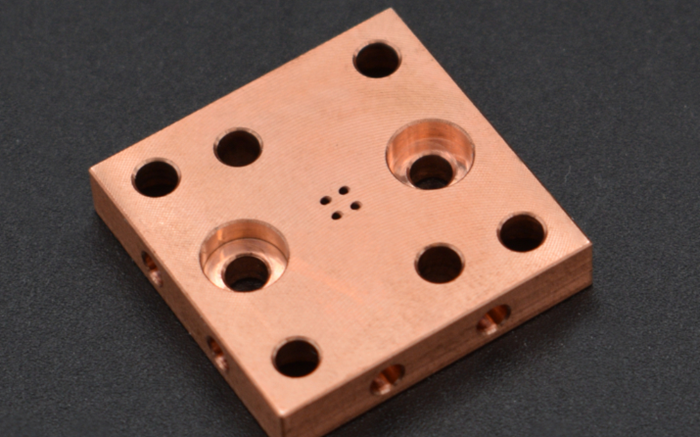
Advantages of CNC Machining Copper
The advantages of CNC copper parts machining include the general benefits of machining – high precision, reproducibility, versatility, ease of achieving components with complex geometries and tight tolerances, and many more.
Besides these benefits, CNC copper parts are known for their excellent impact strength and resistance to abrasion. Also, they retain the electrical and thermal conductivity of the actual copper material, reducing corrosion, wear, and tear resistance.
Regarding surface finishing, CNC is an automated and exact process that ensures slight deformation or defects. Therefore, there is usually less need for surface finishing, as it leaves the copper workpiece with a quality surface finish.
Limitations to Copper Machining
While copper CNC parts possess numerous benefits, there are some shortcomings. A typical example is the inability of certain machined copper parts to undergo specific welding operations such as spot and metal arc welding. This increases their propensity to corrosion and rusting.
CNC Machining Processes for Copper Metal
There are various CNC machining processes. Below are machining operations as they apply to copper material.
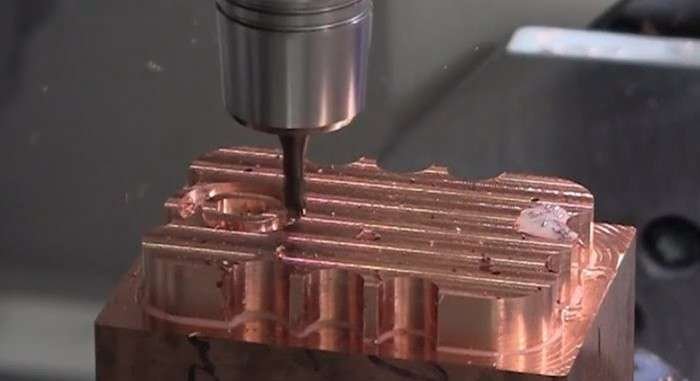
CNC Milling Copper
CNC milling operations involve using rotatory cutters to remove pieces from a workpiece until the desired shape is achieved. Like CNC machining brass, it is usually automated, ensuring it’s high-precision and suitable for fabricating holes, slots, notches, grooves, contours, and flat surfaces.
CNC milling copper is a standard operation because of copper’s relative machinability. The mills for this operation are usually a 2-flute carbide.
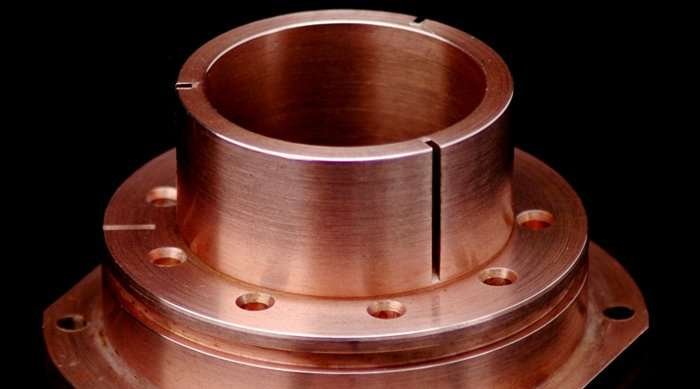
CNC Turning Copper
Another typical CNC operation is turning. The workpiece is usually stationary, then the rotary cutters feed around the workpiece, chipping off excesses until the intended design is attained.
Turning is one of the most cost-effective CNC machining processes and supports manufacturing metal parts. This CNC operation is suited explicitly for fabricating components with axial symmetry, such as cones, cylinders, disks, or a combo of these shapes. Typical applications of copper CNC turning include manufacturing wire connectors, valves, radiators, and busbars.
Mill-Turn Copper
As the name suggests, a mill-turn machine is a hybrid CNC machining device that can carry out milling and turning operations. The machine is valuable, especially when working with copper parts with complicated geometries. An example is machining a structure consisting of a combo of cylindrical and flat surfaces and holes, among other delicate details.
Essentially, mill-turn machines provide a dual setup, reducing the excessive machine setup and saving time and space. Also, since it’s a single machine, there’s improved accuracy and precision.
Post-Processing Options for CNC Machining Copper
After machining, manufacturers and machinists may need to engage in some post-processing and surface finishing to improve the properties of the machined part. This usually enhances its appearance and the general features of the product.
Below are effective post-processing and surface-finishing techniques for copper parts machining.
Electroplating
Electroplating is an electrochemical process that involves coating the surface of a metal material. The effect of this finish is an enhanced appearance and mechanical and chemical resistance, including corrosion resistance. The resulting copper parts are usually more durable, with little to no effect on their electrical and thermal conductivity.
Bead Blasting
This surface finishing is often used for masking flaws and machining deformations of CNC-machined copper parts. It involves propelling (blasting) tiny pieces of an abrasive material against a material. Beyond hiding manufacturing flaws, it also improves the appearance and longevity of the product.
Brushing
Brushing is a mechanical operation that uses an abrasive brush to improve the surface property of a material. Whether manual or automated, the finishing achieves deburring and smoothens the machined copper component.
Polishing
Polishing is a vital surface finishing that helps enhance the manufactured part’s aesthetics. While hard polishing is laborious, it is effective; however, electropolishing is better. The latter can rid the surface of the material of microscopic impediment, even as low as 2.5 mm. Therefore, the machined copper part is smooth, glittery, and shiny.
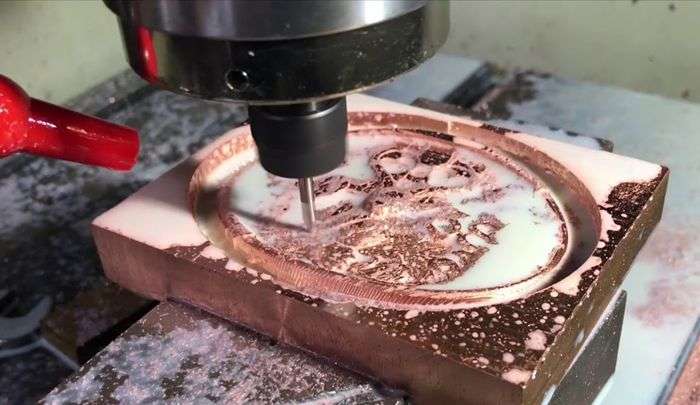
Factors to Consider for Copper Machining
During manufacturing, including with an automated process like CNC machining, there are criteria that machinists need to adhere strictly to.
Selecting the Right Copper Grade
Before machining, you must select the correct grade of copper material most appropriate for your fabrication. The selection process is often based on the intended application of the fabrication; it may also include the selected machining process.
For example, copper C101, even though it is a purer copper grade, is less machinable than C110. However, it is better for fabricating minute and complex components. But overall, C110 is better for machining, especially turning operations, because of its increased ductility.
Design Constraints and Specifications
The design constraints and specifications are also critical to note before machining copper. This allows you to fabricate parts that will achieve the desired functionality.
For example, a general guideline when machining aesthetic copper parts is maintaining a wall thickness of at least 0.5mm. In addition, machinists may need to double-check the tooling dimensions, among other intricate details, before machining. It’s often best to reduce the number of parts set up and use a small radius to prevent fabrication from developing deep pockets.
Machining Tools Selection
Copper is relatively rigid, with varying machinability, depending on the grades you are working with. Therefore, manufacturers must select the right cutting tools for practical machining purposes. The ideal cutting tool for general CNC copper machining is high-speed steel (HSS). Because of the high speed of these cutters, there’s increased resistance to wear and tear and fewer machining complications, like chip formation.
Another excellent cutting tool for different copper grades is cemented carbides, which share similarities with HSS regarding the cutting speed. Therefore, it also prevents machining defects and ensures smooth machining services.
Feed Rate of Cutting Tools
The feed rate refers to the speed at which the cutters interact with the copper material. High feed rates may cause an increase in temperature, increasing the risk of possible heat deformations on the workpiece and possibly increasing the tendency of tool wear. Also, do not give the spindle speed. When CNC machining copper, maintain a steady processing speed for optimum machining.
Another measure you must adhere to during copper CNC is using an ideal lubricant as a coolant. This will help limit the heat build-up, preventing machining deformation. Also, you should avoid the chops from clogging the mouth of the cutters – the spiral grooves, for effective cutting.
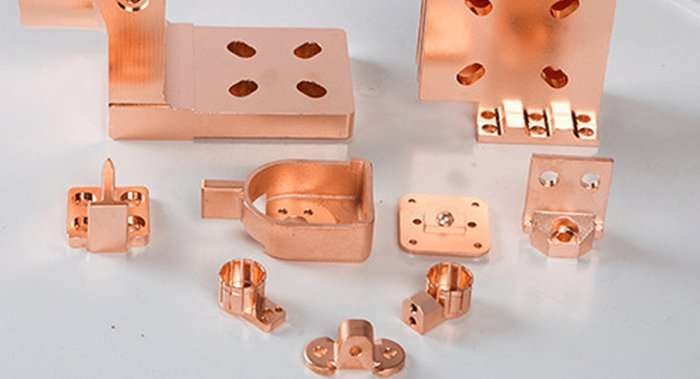
Applications of CNC Machined Copper Parts
We have briefly touched on some of the applications of copper CNC parts. Below are industries where these components benefit, with specific examples.
- Electronic: Connectors, PCBs, terminals, etc;
- Automotive: Heat exchangers, gaskets, bearing and gears, radiator cores;
- Telecommunications: Wirings and connectors;
- Plumbing: Fittings and valves.
XinCheng Offers CNC Machining Services for Metal Parts
Besides understanding CNC copper, partnering with a reputable manufacturer can help put your products into the market efficiently. XinCheng is the partner you want for all your CNC machining services, including prototypes to parts with one or bulk production.
Our CNC machining services extend to a variety of metals, such as copper, aluminum, stainless steel, and titanium. XinCheng’s skilled technicians and advanced CNC equipment are adept at handling unique machining challenges. Whether you are in the aerospace, automotive, medical, or any other industry, XinCheng has the experience and capability to deliver metal machined parts that meet the specific demands of your sector.
Conclusion
Copper is a valuable material (metal) for the various manufacturing industries. It has top-notch mechanical and chemical properties, making it a good fit for CNC machining operations. Besides enhancing general manufacturing, the method has specifically improved how manufacturers utilize copper.
FAQs
What are the benefits of CNC machining copper over other manufacturing methods?
CNC machining copper is highly precise and reduces the need for surface finishing and post-processing operations. Also, it is highly versatile and efficient, making it a valuable manufacturing process for copper.
What alloying element increases copper machinability?
Copper alloys are formed by adding elements, mainly metals and semimetals, like zinc, tin, tellurium, nickel, aluminum, silicon, phosphorus, etc. All these alloying elements improve the machining properties of copper to varying degrees.
Is copper easy to machine?
Pure copper metal is difficult to machine. Hence, the a need for alloying copper to increase its machinability.

